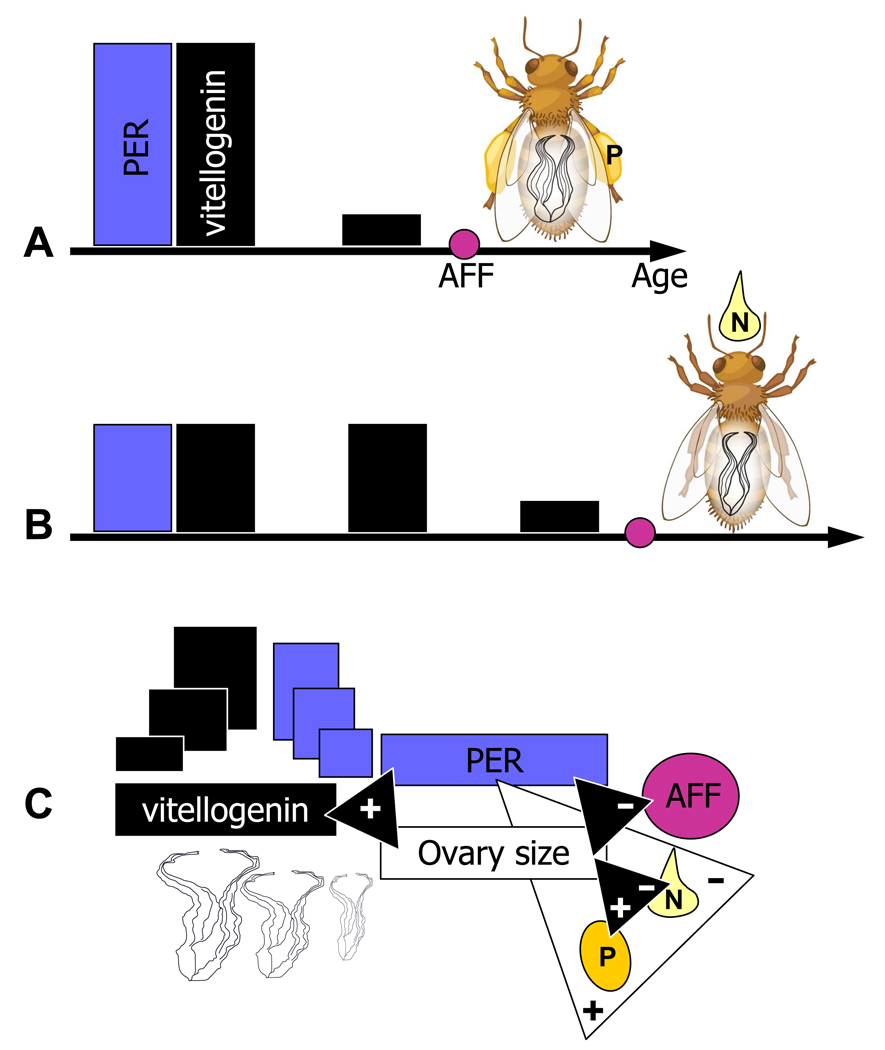Figure 1.
Variation in foraging behaviour correlates with differences in sensory and reproductive traits in worker honeybees. Trait associations in selected high (a) and low (b) pollen-hoarding strain bees. Horizontal arrows show the timeline of worker ontogeny (Age). High strain bees emerge as adults with a larger ovary (white line-drawings inside bees), elevated sucrose responsiveness measured by the proboscis extension reflex (PER, blue bars), and develop a higher peak titre of vitellogenin yolk protein (black bars) as young adults compared with low strain bees. The vitellogenin level of high strain bees then drops rapidly and workers initiate foraging earlier in life than bees with low strain genotype. This difference in ‘age at first foraging’ (AFF) is indicated by violet circles, panel (a) versus (b). As foragers, high strain workers bias their collecting towards pollen (‘P’, bee in (a)), while low strain workers are biased towards nectar (‘N’, bee in (b)). (c) The corresponding trait correlations in wild-type (unselected) worker bees, which show considerable phenotypic variation (illustrated by ovary, PER, and vitellogenin symbols of various sizes). Black, connecting triangles indicate positive (+) correlations between vitellogenin expression, PER and ovary size, and between ovary size and pollen foraging, and negative correlations (−) between PER and age at foraging onset, and between ovary size and foraging onset. The white triangle specifies that PER is also correlated with foraging choice directly. These associations in wild-type bees reflect the same relationships as those seen in selected pollen-hoarding strain workers.

